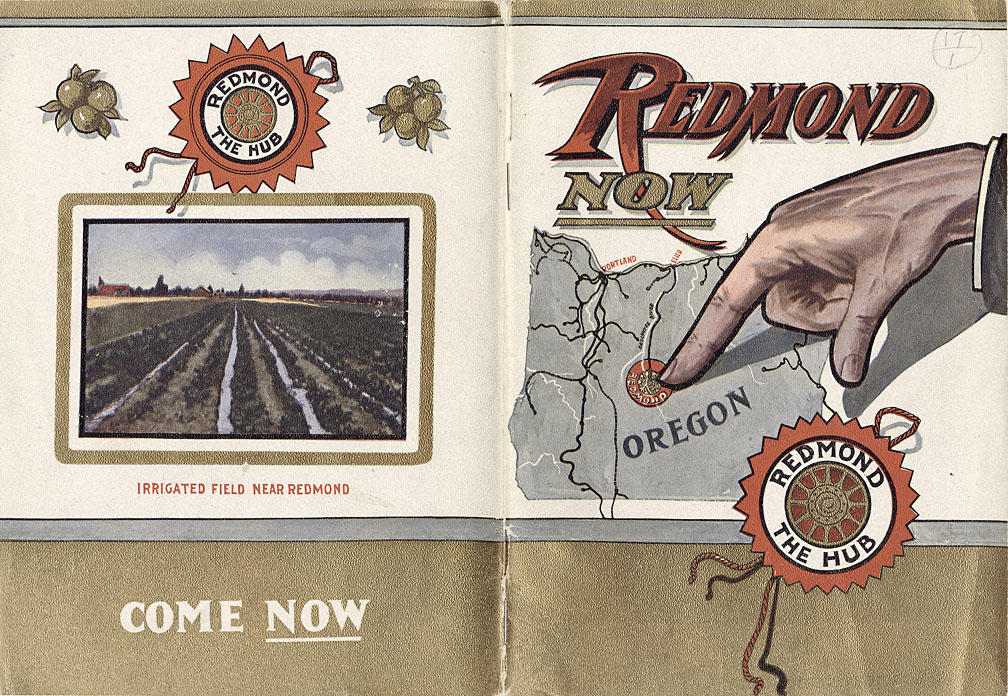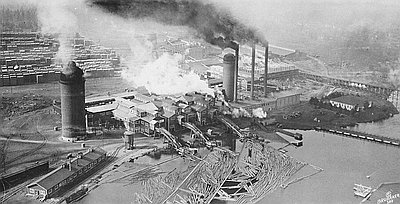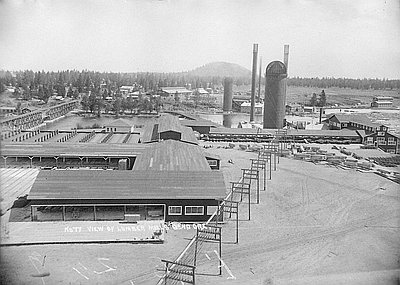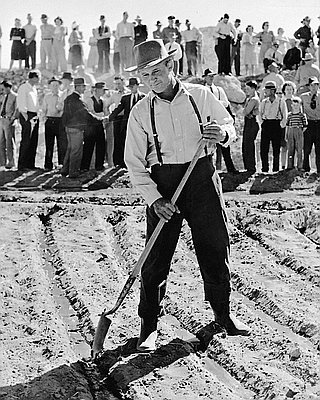This promotional pamphlet of Redmond, Oregon was co-published by Southern Pacific and the Oregon Railroad & Navigation Company in 1910. The railroad companies hoped to attract settlers to central Oregon’s communities to increase the trafficking of commodities on their rail lines. According to the pamphlet, “Everything points to Redmond as a commercial center. Merchants, professional men, manufacturers, homeseekers should investigate Redmond now, before the railroad [the Oregon Trunk Railway] is completed, before values enhance greatly, before the big opportunities are all taken.”
The city of Redmond was named after its first residents, Frank T. and Josephine Redmond, who settled there in 1904. Two years later, the extension of the Deschutes Irrigation and Power Company’s Pilot Butte Canal from Bend to the lands that would become Redmond, provided water for settlers hoping to farm the area’s dry volcanic soils. Redmond was platted for development in 1906 and by 1910 was populated by more than 200 people. By the time, the “Redmond Now” pamphlet was being distributed, the town already had a school, two banks, telephone service, a library, jail, lumber and brickyards, saloons, laundry, and many other small business. In 1911, the development of a small hydropower plant at the nearby Cline Falls provided electricity to the town, and a year later Redmond’s residents supported the construction of a municipal water system.
Until 1915, Redmond rivaled Bend as the commercial center of central Oregon, but that year two large lumber companies decided to locate mills in Bend. The two mills, operated by the Shevlin-Hixon and Brooks-Scanlon companies led to a population boom in Bend. The fast-growing community and economy of Bend quickly eclipsed Redmond’s slower growth and in 1916, when the two communities competed for the location of the county seat, Redmond lost out to its larger neighbor.
Further Reading:
Clark, Keith. Redmond: Where the Desert Blooms. Portland, Oreg., 1985.
Written by Joshua Binus, © Oregon Historical Society, 2005.



